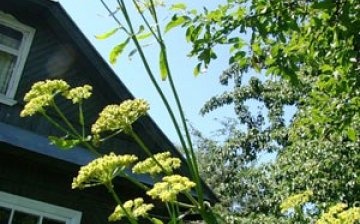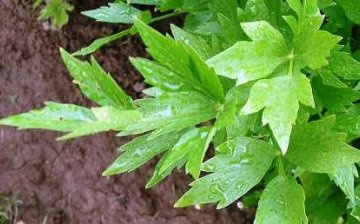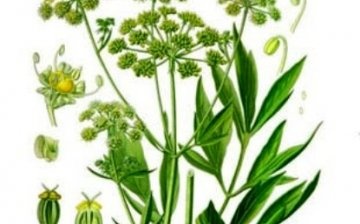Lovage Leaves, Seeds and Root - For Taste and Health
Perhaps every plant that nature gave us has one or another useful properties. After all, even fly agarics are used in the treatment of certain diseases. Many plants, due to their unique qualities, have received very beautiful names from the people. For example, the lovage plant. It has several popular names - dawn, lyubchik, love herb. This is most likely due to the fact that the root of lovage, like its leaves and seeds, has a pleasant tart aroma, exciting and memorable.
Where does lovage grow?
Botanists have found that the homeland of lovage, which is so popular as a spice in Europe, is Afghanistan and Iran. It was from there that this plant spread almost all over the world. Now the dawn is cultivated to obtain healing and aromatic raw materials, but it grows wild everywhere. Although cultivation on special plantations or in gardens is the main form of growing love herb.
What does lovage look like?
Zorya is a very interesting plant. It can be called a herbaceous tree, because it can reach a height of 2 meters! But it is not only this growth that lovage is sometimes called a tree of grass. It has a large, thick root, which has a dense light flesh on the inside, and is covered with a darker bark on the outside. A thick, hollow stem grows from the root, which branches out at the top. The lovage leaves are just as remarkable. In the upper part, they sit directly on the trunk of the plant, and in the lower part, they are located on long petioles. The leaves themselves have a kind of incised structure, dividing into rhombic parts. Lovage belongs to the umbrella plants, because its small and inconspicuous flowers, yellowish, collected in inflorescences, resembling an open umbrella in shape. The plant blooms all summer - from May to September. When the plant ripens, seeds are formed on it, which are ribbed, oval-elliptical fruits, yellowish-brown in color. Each fruit produces two seeds, which is why they are called two-seed. All parts of lovage have a peculiar, spicy smell. It is a bit like the aroma of another spice - celery. That is why in some places the dawn is also called winter celery.
How is lovage harvested?
It turns out that lovage is interesting not only for its structure. Collecting it for the preparation of medicinal or aromatic raw materials is also unusual. In the first year, only the top leaves are harvested from the plant to obtain a fragrant seasoning. The plant itself is not touched. Although the root is mainly a valuable raw material. But the root, just in the first year of plant growth, should not be touched - it has poisonous properties at this time. In the second year, all parts of the lovage can be collected - leaves, inflorescences, seeds and root. The collection of rhizomes is carried out in the fall. The roots of lovage are dug up, cleaned of excess soil, washed and dried, strung on a thread or twig. They can be cut into pieces if they are too large. After ripening, the seeds are collected, dried and stored. Leaves can be harvested throughout the growing season of the plant. But you need to be very careful not to confuse lovage with other umbrella plants!
Useful properties of love herb
Unfortunately, the official medicine of our country did not include lovage among medicinal plants. But in the pharmacology of other countries, this plant is used for many diseases. There is nothing to say about folk medicine - the beneficial substances contained in parts of lovage have allowed this plant to gain popularity in the treatment of many ailments.
The main application is the root of lovage. Its decoctions and infusions help cure cough and bronchitis, bladder disease and lack of appetite.
Medicines based on lovage root have a good expectorant effect, which is used in the treatment of those diseases where cough is the main consequence. Dawns broth is also used as a diuretic. This allows it to be used by hypertensive patients with kidney problems. With the help of a decoction of lovage root, they get rid of edema. It is a good helper for migraines, urinary problems, as well as for healing wounds and cuts. Since anti-inflammatory substances are found in the roots of lovage, preparations based on it help well to fight intestinal infections, as well as flatulence.
In addition to medicinal properties, lovage has a unique taste and aroma. This made it possible to use it as a seasoning for various dishes - meat, fish, as well as a seasoning for pastries and fruit drinks.
Lovage is a useful plant in every sense that deserves our attention both in treatment and in cooking.











I learned about this plant and its beneficial properties quite recently, somehow I did not pay attention to it before and considered it a weed. I also heard that the hair is rinsed with a decoction of leaves to improve growth and appearance.